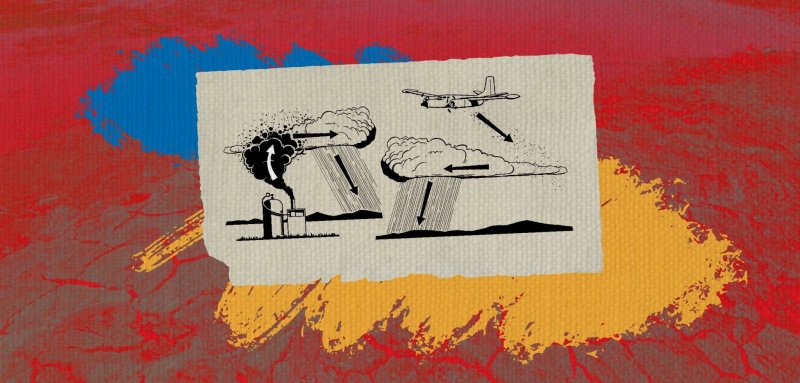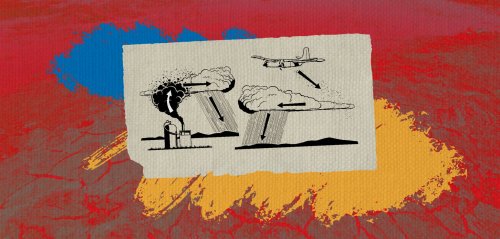The scarcity of rain and drought prompts many scientists and researchers to search for alternatives to save water, such as the use of artificial rain technology, part of a large episode of the process of weather modification, and rain results from the pollination or seeding a specific type of clouds capable of rain in a specific place and time with chemicals known as environmentally friendly.
Video about the mechanisms of cloud seeding
Iraq is seeking to use artificial rain technology, according to a press statement by the Iraqi Minister of Environment, Jassem Al-Falahi, at the beginning of July 2022. Drought is raising the alarm, especially for farmers and animal breeders, as in the Umm Khashm area of Al-Mashkhab District in Najaf Governorate, where farmers and breeders are forced to cooperate with private sector companies to dig wells for water.
“The high percentage of salt in the water that comes out of drilling wells harms animals and plants and needs desalination plants for filtering, such plants are expensive, so we end up using this water to clean animals and for watering trees” says agricultural engineer Raed Al-Fatlawi.
Al-Fatlawi heads the Iraqi Buffalo Union (a civil society organization and the largest gathering of buffalo breeders), and the union oversees several Iraqi regions and governorates, including the Mashkhab district in Najaf. Al-Fatlawi is also interested in palm cultivation and fodder as well.
The lack of water caused malnutrition for buffalo herds, which led to a reduction in the milk production and the spread of disease. Al-Fatlawi indicates the death of about 40% of buffaloes in the areas they supervise putting the southern governorates at the forefront of cattle deaths.
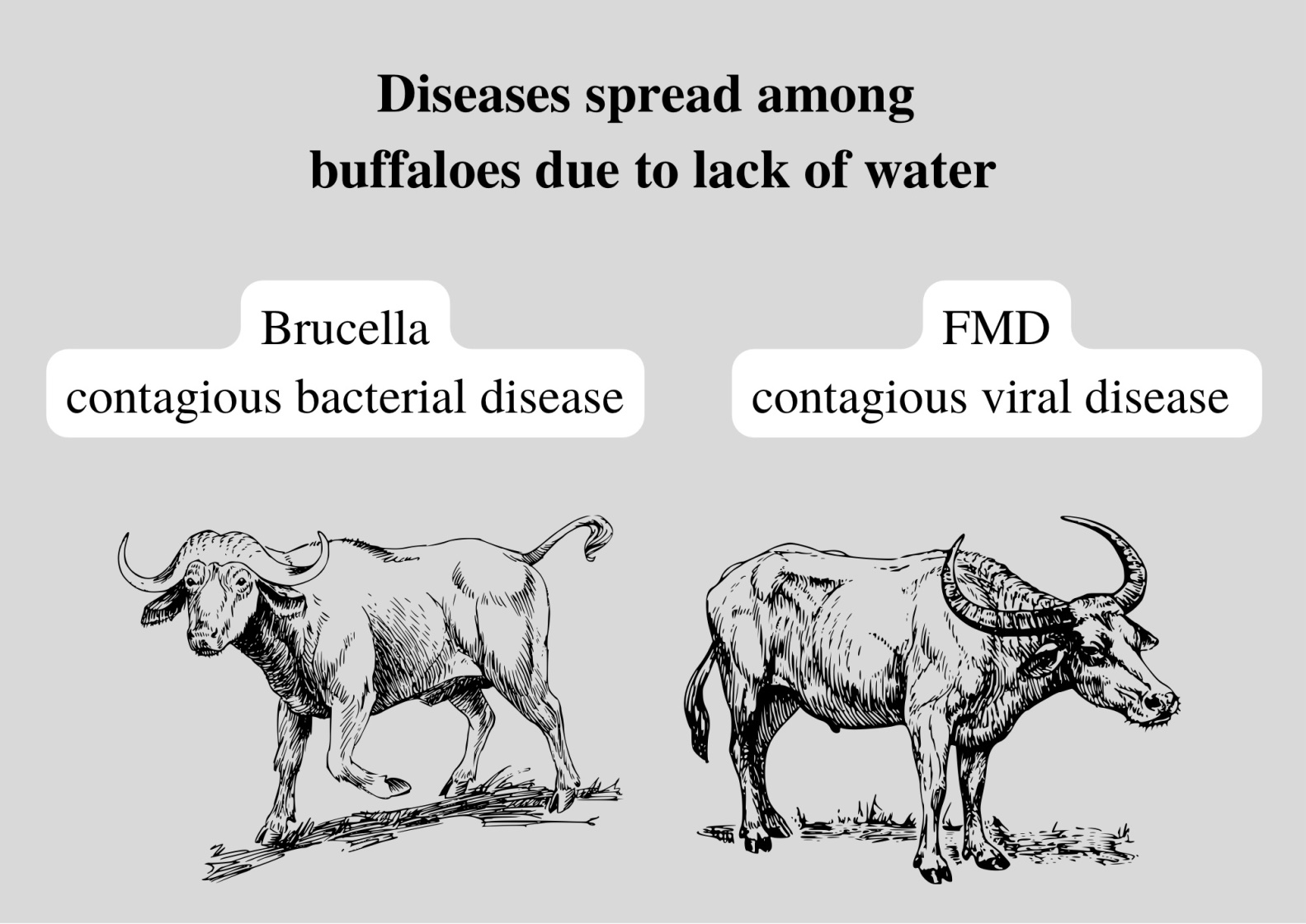
Feed prices have also increased due to the scarcity of water, so the farmer or breeder has resorted to alternatives. Al-Fatlawi says: "We buy leftover foodstuffs and agricultural crops, such as hay and molasses (the black Honey), and give them to buffaloes because of our current conditions."
Palm groves have also withered in Mashkhab district, with a range of 10 to 15%, with the spread of palm weevil disease (an insect that infects palms and causes damage), according to Al-Fatlawi.
“The high level of salt in the water from wells harms animals and plants and needs desalination plants for filtering, such plants are expensive, so we end up using this water to clean animals and for watering trees”
Animals and plants are alone in suffering because of drought. Humans have their share of suffering. Al-Fatlawi asserts that "people, especially in remote areas, are forced to buy water from ponds."
Cloud seeding may be the solution to reduce water scarcity, but there are fears, and Al-Fatlawi says that “artificial rain is a successful project that will increase vegetation cover, but I am afraid of the sources of pollution in the atmosphere due to factories and laboratories because there is no interest in preserving the environment, therefore, these pollutants will fall in the form of rain and will affect the lives of animals and plants,” adding that “there are types of crops in the flowering period, if rain occurs, they will be destroyed, such as the AL-Shalab crop".
Ionization of dust
Among the chemicals used for cloud seeding are silver iodide, sodium iodide, salts, calcium carbonate and other materials.
Following the Minister of Environment’s statement about Iraq’s intention to use the artificial rain technique, some Iraqi experts suggested the possibility of using the “ionization of dust particles” technology to seed clouds instead of chemicals. According to experts, this process works to collect rain clouds and proves more effective when the weather is dusty.
Ionization is a physical process represented by the conversion of an atom into an ion, explains Dr. Laith Al-Zankaneh, Assistant Professor at Garmian University of Sulaimaniyah - College of Languages and Human Sciences - Department of Geography, and also holds a master's degree in Holistic Climate, and a PhD in Applied Climate at Baghdad University - College of Arts - Department of Geography “if an atom gains an electron, it becomes a positive ion, and if it loses an electron, it becomes a negative ion, and in order to convert the atom into an ion, it needs to apply a very high electrical voltage to it, such as electromagnetic energy, which will pull the dust and freeze its movement".
Zangana refuses to use this technique in artificial rain, reinforced by saying that “the ionization of dust can be used to reduce pollution, but I refuse to use it in the seeding process because when clouds are exposed to ions and the energy of the applied effort increases and reaches the surface of the earth, its strength and shock can kill an animal, so how By human?"
Sodium iodide
The technology of artificial rain has been applied scientifically since the forties, and the United States has conducted several experiments and research in the process of modifying the weather, and China is one of the leading countries in the use of the seeding process.
Several Arab countries have used this technology since the last century, such as Algeria, and in the twenty-first century, several Arab regions have resorted to repeating its use, most notably the UAE, Saudi Arabia, Morocco, Jordan and other countries.
"The countries neighboring Iraq have used artificial rain, even Iran and Turkey, and successful experiments have contributed to increasing the amount of rainfall," according to Dr. Laith Zangana.
Zangana notes that "one tea spoon of sodium iodide work on composition between 100 million and 1 billion water droplets, and the best way to seed clouds is to use aircraft because they are accurate”.
An analytical study
In 2021, Zangana published a research titled “Analytical study of rate volume liquid water content in low clouds over Iraq", in the Iraqi Journal of Agricultural Sciences and the research was conducted in cooperation with Dr. Basim Al-Temimi, assistant professor at Al-Mustansiriya University - College of Science–Department of Atmospheric Sciences, with researcher Seif Al-juhaishi.
The study concluded that Iraq has a great opportunity to improve rain by seeding low clouds, and the result came after relying on eight climatic stations available in the Iraqi Meteorological Authority and they obtained data for low clouds through 24 observations per day between 1975 to 2005, and the researchers determined the distribution of the stations and the amount of water using technology Geographical information systems (GIS).
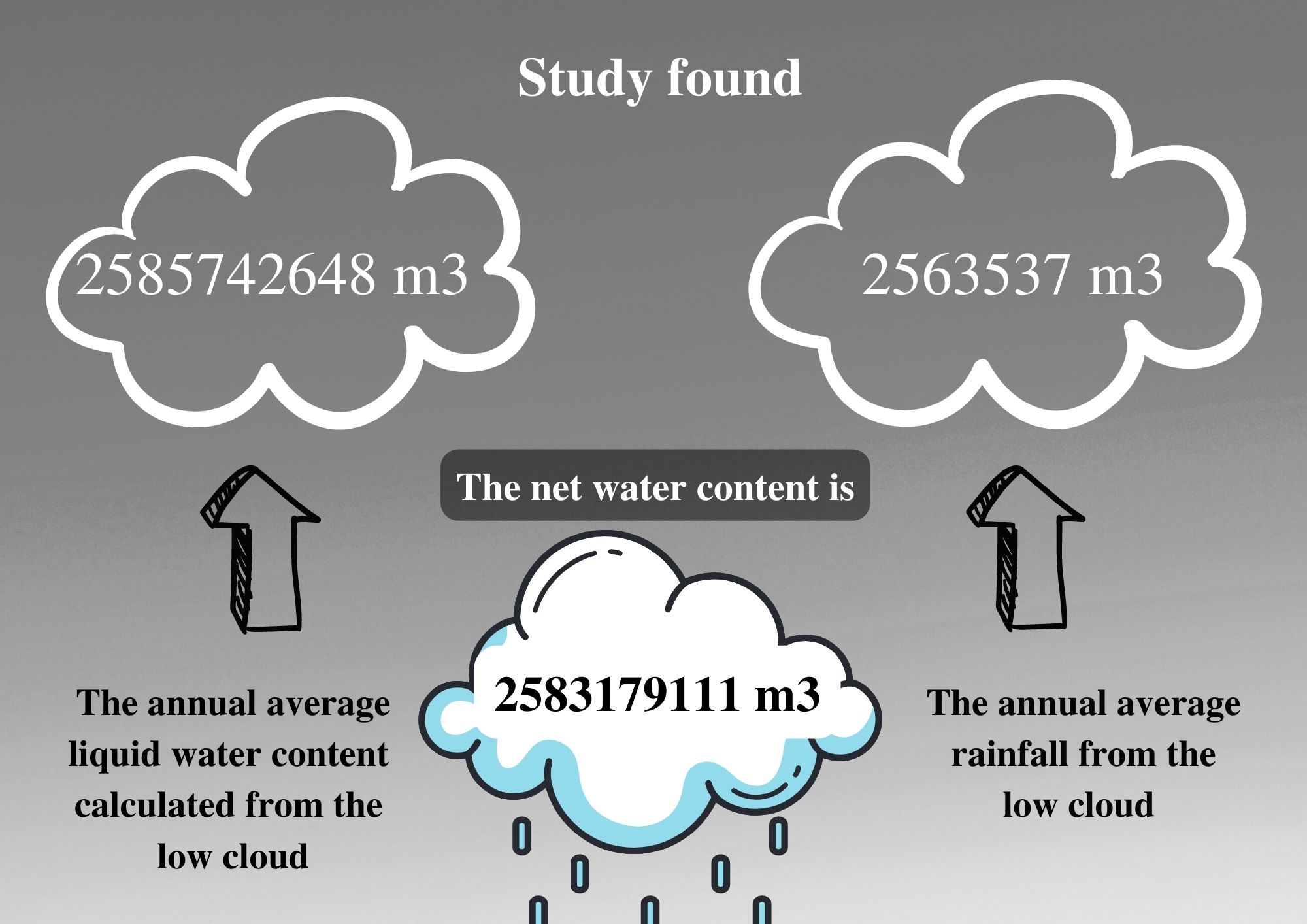
Al- Zangana says that "the idea of the research was initially generated between 2014-2015, and we received an invitation to participate in a global conference on climate change in Canada after their approval of the research, but we did not participate because we did not receive support from universities or official bodies to go to the conference".
The Iraqi Ministries of Planning and Agriculture agreed to the idea of research in 2015, due to the possibility of implementing the research as a project in Iraq, and the Prime Minister approved it, and the project was referred to the Finance Committee in Parliament, according to Al- Zangana.
“Parliament wrote that it was postponing the project due to the high construction costs, after which it was rejected without hearing or summoned us to Parliament to clarify the costs and benefits of the project,” Al- Zangana continues.
Artificial rain technology is not new in Iraq
In the eighties, farmers in the areas of Al-Jazeera and Tal Afar in the Iraqi city of Mosul stopped farming because the rains had receded, hence the idea of using the rain project on those two areas under the supervision of the Military Industrialization Authority at the time between 1988-1989.
Environmental expert, Dr. Monjed Al-Naieb, who holds a master's and doctorate degrees in inorganic nuclear chemistry from the University of Salford, UK, was one of the project participants and responsible for the chemical aspect of cloud seeding.
"The project was gigantic and successful, with 100% Iraqi hands involved and with direct support from the state, and we were divided into two competing groups, the first used liquid materials and the second used solid materials," the Al-Naieb says.
The research that documented Iraq's use of rain technology were destroyed due to the American bombing of industrial and military facilities after 2003, but Dr. Monjed Al-Naieb was able to keep some documents.
The documents indicate the use of Al-Farouq Airport (Tal Afar Military Airport) in Tal Afar as an air base to spray liquid materials in the clouds using two types of aircraft, the first being a helicopter, and then they dependent on a small fixed-wing aircraft used in military training.
As for Al-Rasheed Base (Al-Rashid Camp in Baghdad), it was used as an air base to spray solid materials in the Al- Jazeera region using a large Russian-made aircraft.
Diagram showing how the liquid and solid systems work
Painted by Iraqi engineers in the eighties for cloud seeding
Painted by Iraqi engineers in the eighties for cloud seeding
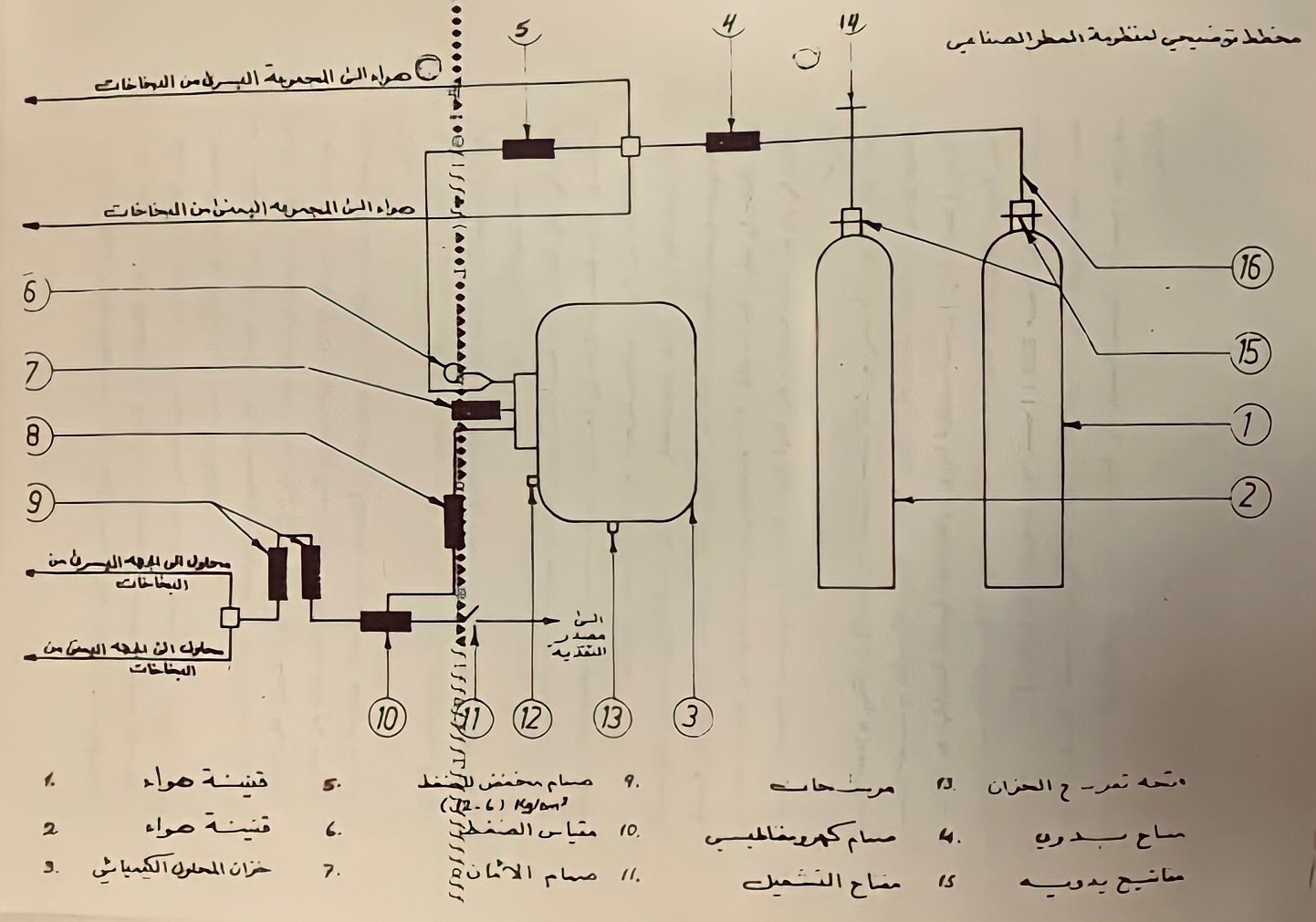
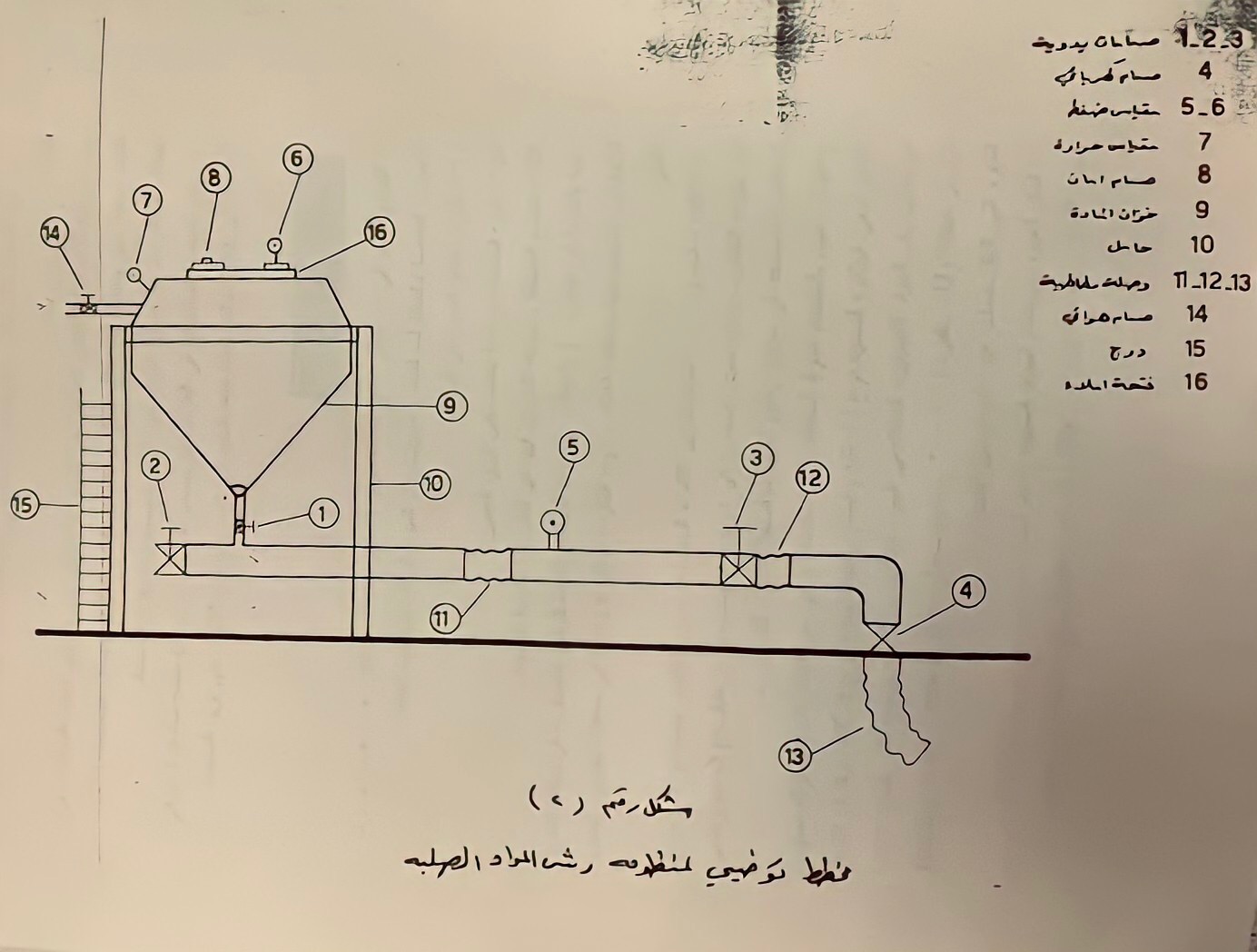
The documents indicated that the Iraqi weather reports and satellite images were relied upon, with the use of air defense radar devices to help select and track clouds suitable for rain.
The Al-Naieb says that "the northern provinces in Iraq are suitable for rain, unlike the central and southern provinces. Indeed, after conducting field experiments, the rain fell, and patent was published after 2003 in the Central Organization for Standardization and Quality Control in Iraq to document this success".
Iraq did not use silver iodide in seed clouds, and the Al-Naieb confirms that “The materials that were used at that time are completely environmentally friendly, and I suggested them and I was responsible for them after studying their specifications, and they are considered an industrial secret for the country and it is not used in other countries and I cannot disclose it, and whoever wants to use it must buy the patent because Iraq is the party that reached these materials”.
The project was halted in the 1990s due to the second Gulf War, and the planes were evacuated outside Iraq and some were transferred to Iran, according to the Al-Naieb.
Impact on human life and biodiversity
Dr. Monjed Al-Naieb did not favor the materials used in the world for cloud seeding, such as silver iodide, and said that "these chemicals are harmful and cause skin diseases and are not suitable for drinking, unlike the materials we used in the eighties in Iraq".
Dr. Laith Al- Zangana holds another scientific opinion, and says that “the chemicals used for cloud seeding have almost negligible harm as long as they are used according to the permissible natural limit,” and he adds that “these materials when they descend on the surface of the earth will turn into salts, for example palm bears from 8 - 16 millimose (millimose is the unit of salt measurement) of salts, and if it exceeds the normal limit, palms will be damaged”.
Relying on clouds
"Artificial rain is an aid to reduce drought, but it cannot be completely relied upon, and it can succeed in Iraq if the ingredients are available, while relying on the experts," according to Dr. Monjed Al-Naieb and shares the opinion as well Dr. Laith Al- Zangana.
Al-Naieb says that "digging underground wells helps in eliminating desertification and drought, for it is a treasure in Iraq," while the Al- Zangana points out that "Iraq has reliable water resources to reduce drought, such as building a green belt".
Regarding the recent floods that hit some Arab countries that use artificial rain, Al- Zangana asserts that "they are caused by the climatic changes that the world is witnessing and not because of the technology of rain".
Dr. Monjed Al-Naieb agrees with Al- Zangana in his scientific opinion, but he points out that “there is only one case and it can be said that artificial rain is the cause of floods when using chymetriel. It is a gas used to control weather conditions. The United States conducted several experiments and research on it, and it tested it in the skies of Iraq between 2010-2011".
This report is published as part of the author's participation in a workshop on science journalism in the realm of the project "Media and Science in the MENA Region", a project of the Goethe Institute, funded by the German Foreign Office.
Raseef22 is a not for profit entity. Our focus is on quality journalism. Every contribution to the NasRaseef membership goes directly towards journalism production. We stand independent, not accepting corporate sponsorships, sponsored content or political funding.
Support our mission to keep Raseef22 available to all readers by clicking here!
Interested in writing with us? Check our pitch process here!
